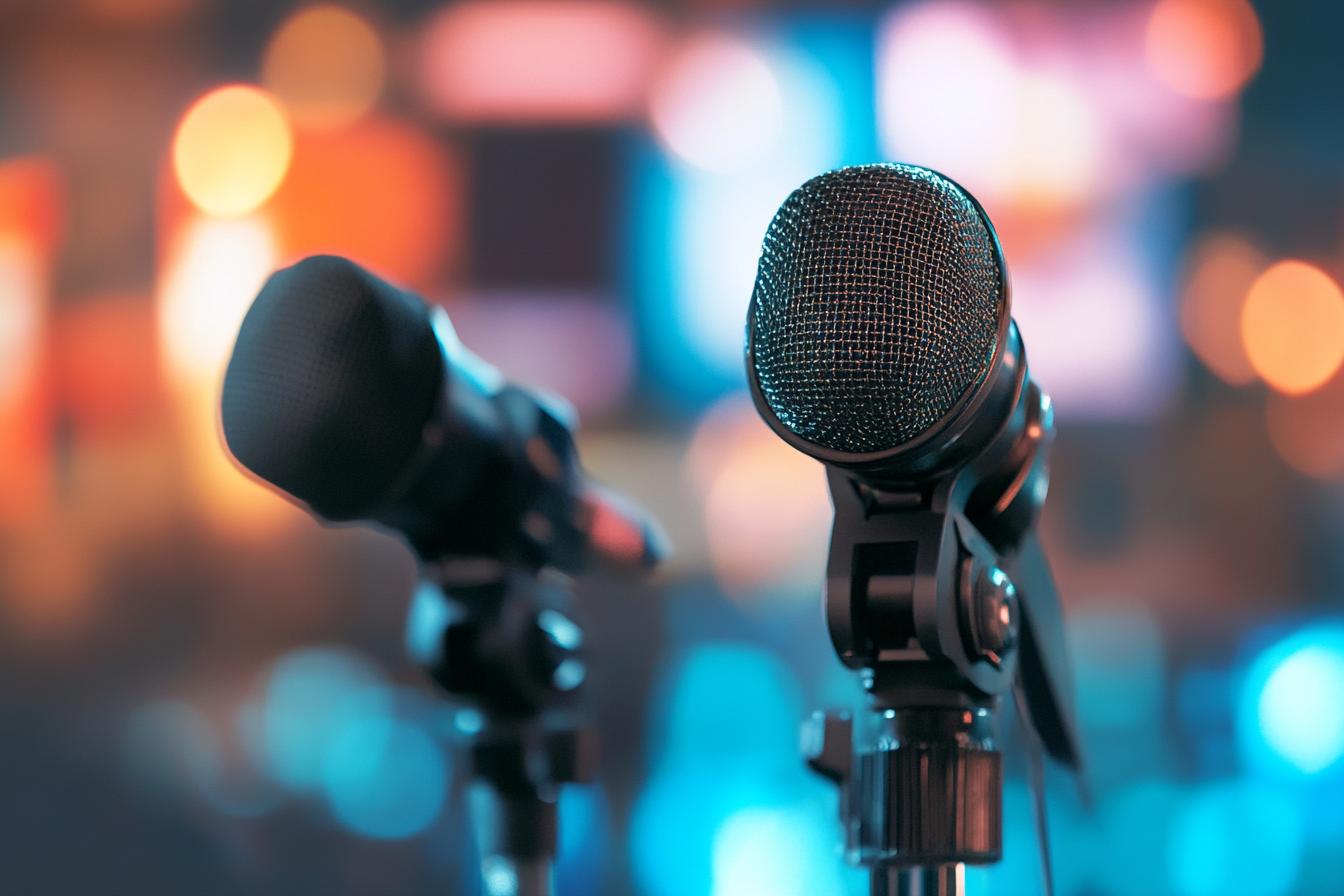Radio news conferences are a critical tool for journalists to gather information and disseminate it to the public. They allow reporters to directly question newsmakers, politicians, and experts on a range of topics. These conferences can be held in person, where reporters gather in a designated location, or remotely via phone or video conferencing. The format is typically structured with an opening statement from the spokesperson, followed by a question-and-answer session. The dynamic nature of radio news conferences allows for quick and direct communication, ensuring that the public receives timely and accurate information.
Think about a breaking news story, like a natural disaster. Radio news conferences become essential in these situations. Imagine a reporter connecting with the mayor of a city devastated by a hurricane. Through a live radio news conference, the mayor can provide updates on the situation, announce relief efforts, and address the concerns of citizens. The immediacy of radio broadcasts allows listeners to stay informed and make informed decisions about their safety and well-being. This is just one example of how radio news conferences play a vital role in keeping the public informed and engaged.

Radio News Conferences
1. Radio News Conferences
Radio news conferences are a powerful tool for disseminating information quickly and efficiently. These live events allow reporters to interview experts, politicians, and other newsmakers directly, providing listeners with firsthand accounts and analysis of breaking news. Unlike traditional news broadcasts, radio news conferences offer a dynamic and interactive experience, as listeners can call in with questions and participate in the discussion.
Furthermore, radio news conferences provide a platform for in-depth coverage of complex issues. Reporters can delve into the nuances of a story and offer different perspectives, ensuring listeners receive a comprehensive understanding of the situation. These events also allow for the exploration of a wider range of viewpoints, contributing to a more informed public discourse. Radio news conferences remain a vital element of radio news, fostering dialogue and bringing the news directly to listeners.
2. Live broadcasts of press events
Live broadcasts of press events offer a direct and immediate connection between newsmakers and the public. These broadcasts allow listeners to hear firsthand the statements and responses of politicians, officials, and other figures during press conferences, announcements, or even breaking news situations. They provide a platform for transparency and accountability, enabling the audience to judge the information presented and form their own opinions.
Furthermore, live broadcasts enhance the immediacy and impact of news. By listening to events unfold in real-time, listeners gain a deeper understanding of the context and significance of the information being shared. The live format also allows for interactive elements, such as call-in segments or online polls, further engaging the audience and fostering a sense of participation in the news cycle.
3. Newsmakers address journalists
Radio news conferences offer a valuable platform for newsmakers to directly engage with journalists and the public. These conferences provide a structured setting for individuals or organizations to announce significant news, respond to inquiries, and clarify their positions on current issues. Newsmakers can use this opportunity to control the narrative surrounding their announcements, offering context and insights that may not be available in traditional press releases. This format also allows for immediate feedback from journalists, fostering a more dynamic and interactive exchange of information.
Furthermore, radio news conferences offer a unique opportunity for newsmakers to connect with a broad audience through the accessibility of radio. The medium’s widespread reach allows for a wide dissemination of information, reaching listeners across various demographics and geographical locations. The live format also adds an element of immediacy and authenticity, allowing listeners to hear directly from the source. By utilizing this platform, newsmakers can effectively communicate their messages, address concerns, and foster public understanding on important topics.
4. Audience engagement through audio
Radio news conferences offer a unique opportunity to connect with audiences in a deeply personal way through the power of audio. Listeners can easily visualize the scene unfolding as reporters deliver vivid descriptions, capturing the emotion and urgency of the event. This is especially true when incorporating sound bites – short snippets of audio from those involved in the news – which add authenticity and immediacy to the story. Sound bites give listeners a chance to hear the voices of those directly affected by the news, allowing them to connect with the human side of the story.
Beyond simply delivering information, radio news conferences can also use audio to spark conversation and encourage audience participation. Interactive elements, like polls and contests, allow listeners to engage directly with the content and share their opinions. Furthermore, using music and sound effects can help create a more engaging and memorable listening experience. By expertly leveraging the unique capabilities of audio, radio news conferences can create a truly immersive and impactful experience for their listeners.
5. Realtime updates and analysis
Imagine a news conference where you get the latest information as it happens, not hours later. That’s the power of real-time updates. These updates allow reporters to provide immediate insights into breaking news stories, giving audiences the most current and relevant information. This immediacy can be especially important during crucial moments like political speeches, major events, or emergencies.
Beyond just presenting the facts, real-time updates also offer valuable analysis. Experts can weigh in on the significance of the developing story, providing context and perspective. This combination of raw data and expert commentary helps audiences understand the bigger picture and make informed decisions.
6. Importance of sound quality
Sound quality is crucial in radio news conferences because it directly affects how listeners perceive the information being delivered. Clear, crisp audio allows listeners to easily understand the message, enhancing the credibility and professionalism of the conference. Poor sound quality, however, can create a distracting and unprofessional experience, potentially hindering the listener’s ability to grasp the information and potentially damaging the reputation of the organization hosting the conference.
Moreover, sound quality can influence the emotional impact of the message. A well-produced audio track with balanced levels and minimal background noise can create a sense of authority and professionalism, while poorly recorded audio can come across as amateurish and lacking in credibility. In a fast-paced news environment, listeners rely on radio news conferences for accurate information. Sound quality plays a vital role in ensuring that information is delivered effectively and understood clearly.
Conclusions
So, there you have it! Radio news is more than just listening to a voice. It’s a dynamic medium that brings you right to the heart of the action. From live press conferences to interviews with newsmakers, you’re getting firsthand information and insights. Plus, radio lets you hear the emotion in their voices, making the news even more impactful. And don’t forget about those real-time updates! Radio keeps you in the loop, analyzing events as they unfold. But remember, it all comes down to that sound quality. A crystal-clear audio experience makes all the difference, letting you hear every word and nuance of the story.


